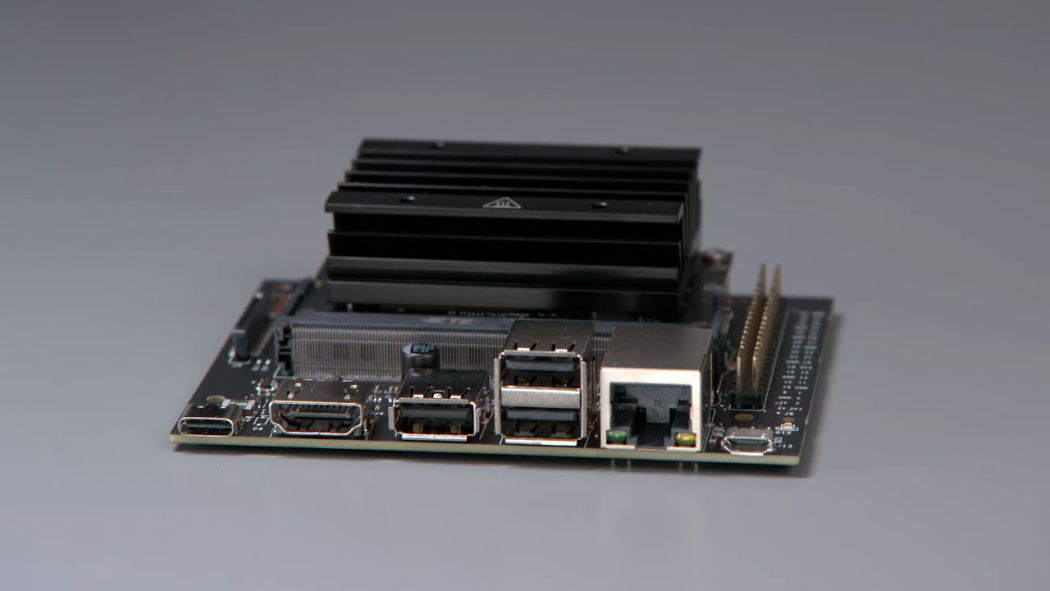
Over the past few weeks, there have been several excellent single-board devices. Only recently a competitor Raspberry Pi 4 with an x86 processor entered the market , and now Nvidia has introduced another alternative to the "malinka", only with a bias in artificial intelligence technology.
The novelty is called Jetson Nano, this is the second version. The first appeared in 2019 and was sold for $ 99. The new single-board device is practically the same in functionality, but cheaper - the cost of the device is $ 59.
The difference between the second generation and the first is half the amount of RAM, 2 GB instead of 4 GB and the presence of a wireless WiFi module. True, it is not built-in; a USB dongle is included with the single-board device.
Nvidia also launched a free online certification program for AI professionals. The Jetson Nano has a large community that continues to grow. Community representatives regularly post tutorials and source codes for their projects. There are even kits of add-on modules for building robotic devices based on the Jetson Nano.
Device characteristics:
- Cost: $ 59.
- CPU: 64-bit Quad-core ARM A57 (1.43 GHz).
- GPU: Nvidia Maxwell 128-core chip.
- RAM: 4GB DDR4.
- Communication: Ethernet 10/100/1000, Wi-Fi dongle.
- Ports: 2x USB 2.0, 1x USB 3.0, HDMI, CSI Camera Connector.
- Interface: 40-Pin GPIO.

The main difference from the previous version is the power supply of the new device via USB Type-C. Power specifications - 5V, 3A. The new version has one USB 3.0 port and two USB 2.0 ports. The previous generation had four USB 3.0 ports. In addition, the second generation has only HDMI for image output. The former also had DisplayPort. Now they decided to get rid of it in order to reduce the cost of the device.
It's worth noting that the Jetson Nano is compatible with a number of Raspberry Pi modules. For example, with camera modules. In addition, the new device's GPIO is compatible with Raspberry Pi HATs. But the software for the "raspberry" is not directly compatible. For example, the Raspberry Pi runs on the Debian-based Raspberry Pi OS. Nvidia's single board comes with an Ubuntu distribution called eLinux. So some of the software is compatible, but not all packages that are suitable for one PC are suitable for the second.
According to Nvidia's first generation single board users, these systems are great for real-time image recognition. But the Raspberry Pi, even with the maximum configuration without additional accelerators, cannot always cope with this task.
